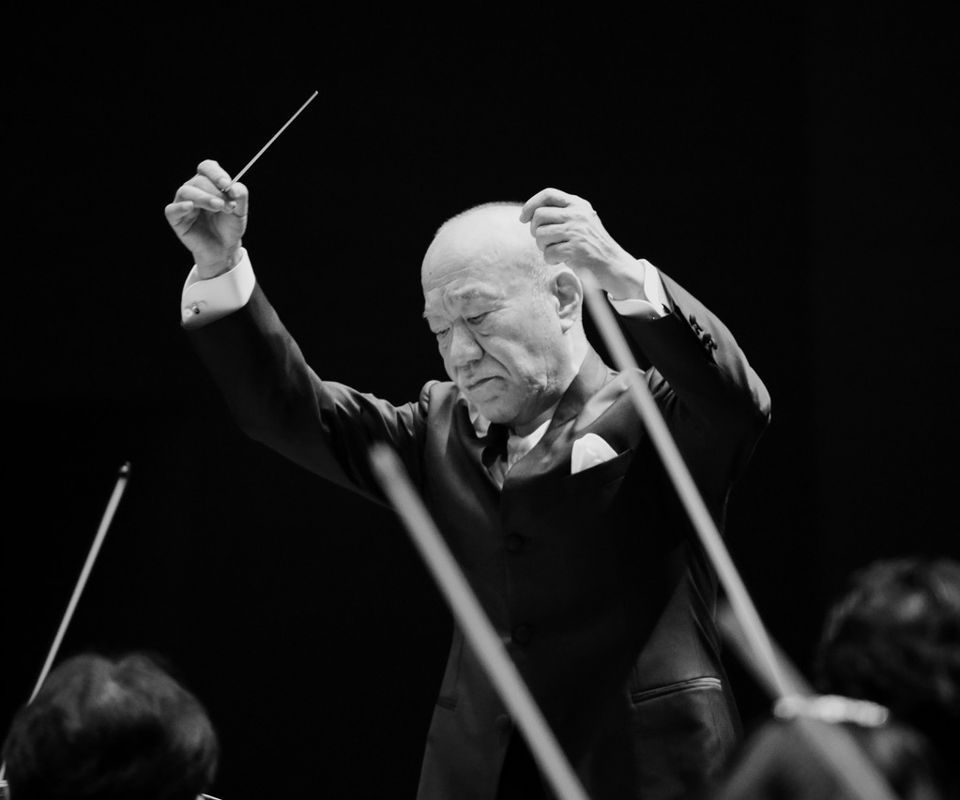Hisaishi @ Hollywood Bowl: The Enduring Power of Concert Hall Music
- Taizo Nakayama
- Aug 29, 2023
- 3 min read
Updated: Dec 13, 2023

The sun has set over the mountains, with the Hollywood sign dimly visible near the peaks. The audience’s chatter is replaced by expectant silence while the orchestra tunes their instruments. The notes fade in and out as they stack, a prelude to the upcoming spectacle by Joe Hisaishi, the composer of nearly all of the Studio Ghibli film scores. As Hisaishi takes a breath and bows hover above the strings, we ready ourselves for the first note under the Los Angeles sky. This is the Hollywood Bowl.
From the first piece, “Merry-Go-Round of Life” from Howl’s Moving Castle, Hisaishi multitasks with a composed elegance. He conducts the orchestra with one hand while playing the piano melody on the other at center stage. The orchestra matches his jazzy touches to his most recognizable piece as the music comes alive in its ebbs and flows, breaking free of its original time signature.
We take a break from Ghibli themes with Debussy’s “La Mer." My only experience with the composer was "Clair de Lune," so I was surprised by the rich complexity of Debussy on a full orchestral scale. The composition’s ocean theme is prominent in the three-movement excerpt. Even the woodwind and brass sections ebb and fall along with the strings, evoking imagery of tidal waves. The harp is also used effectively to convey the rise and fall of the tide through the rocky shore.
The atmosphere of the audience is markedly different here from that of the previous piece. We are not reminiscing in nostalgia over our favorite childhood film, but rather entranced by the strange melody. With “Dialogue of the Wind and the Sea”, the piece comes to a close. The final note by the violins draws out and Hisaishi closes his hand. We linger in the ephemeral, tense silence. Then, as he relaxes on stage and smiles to the orchestra, we ourselves may draw a long-held breath, the spell momentarily broken. Basking in the applause, the musicians take deep bows.
The night (formally) ends with the “Princess Mononoke Suite”. One of the most notable moments here was the Princess Mononoke theme, performed by soprano Janet Todd. Although I’m glad they stuck to the original Japanese lyrics as opposed to previous performances, the on-screen translations were disappointingly unfaithful. Nevertheless, Todd’s rendition was powerful and haunting, with added dramatic flair to match the occasion.
As the suite transitions from the vocal powerhouse to slow orchestral, we glimpse the leitmotif of the “Daidarabotchi”: the giant forest guardian spirit in the film that is reborn each nightfall as little forest spirits (kodama) clatter in anticipation around it. In the Hollywood Bowl amphitheater at twilight, we—the audience—are the kodama, surrounding the clearing as Hisaishi’s musical spirit swells with each crescendo.
Though Hisaishi exits the stage after Mononoke to a thunderous standing ovation, we know the night isn’t over just yet. He walks in and out of the stage a few times as we continue to applaud—a sight well-remembered by veteran audiences of the Bowl—before finally reaching for the mic. “Can I play another song?” he asks in unsteady English to a roaring crowd. He plays a total of three pieces for us that night, two of those his own solo piano performances. His surprising vulnerability in these solos, with occasional stumblings over notes and his fatigued hands, allowed me to better appreciate the dedication to which Hisaishi approached his craft.
This Hollywood Bowl tradition of encores also reveals a spirit of service and celebration in these concerts. I fondly remember John Williams finally stepping up to conduct the Imperial March for an audience waving their lightsabers ecstatically some summers ago. As the audience cheers expectantly and the orchestra bows and waves, they together build the atmosphere of just appreciating great music.



you saw john williams live??????